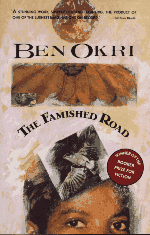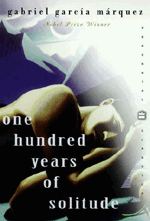Why Did Latin American Authors Incorporate Magical Realism in Their Writings
Magical Realism
A literary mode rather than a distinguishable genre, magical realism is characterized by two conflicting perspectives, one based on a so-called rational view of reality and the other on the acceptance of the supernatural as prosaic reality. Magical realism differs from pure fantasy primarily because it is set in a normal, modern world with authentic descriptions of humans and society. It aims to seize the paradox of the union of opposites; for instance, it challenges binary oppositions like life and death and the pre-colonial past versus the post-industrial present. According to Angel Flores, magical realism involves the fusion of the real and the fantastic, or as he claims, "an amalgamation of realism and fantasy." The presence of the supernatural in magical realism is often connected to the primeval or magical "native" mentality, which exists in opposition to European rationality (See Myths of the Native). According to Ray Verzasconi, as well as other critics, magical realism is "an expression of the New World reality which at once combines the rational elements of the European super-civilization, and the irrational elements of a primitive America." Gonzalez Echchevarria believes that magical realism offers a world view that is not based on natural or physical laws nor objective reality. However, the fictional world is not separated from reality either. (See Metafiction)
Background
The term "magical realism" was first introduced by Franz Roh, a German art critic, who considered magical realism an art category. To him, it was a way of representing and responding to reality and pictorially depicting the enigmas of reality. In Latin America in the 1940s, magical realism was a way to express the realistic American mentality and create an autonomous style of literature. Yet, magical realism is not confined to Latin American literature alone, for many Latin American writers have influenced writers around the world, such as Indian writer Salman Rushdie and Nigerian poet and novelist Ben Okri.
Characteristics of Magical Realism

Hybridity:Magical realists incorporate many techniques that have been linked to postcolonialism, with hybridity being a primary feature. Specifically, magical realism is illustrated in the inharmonious arenas of such opposites as urban and rural and Western and indigenous. The plots of magical realist works involve issues of borders, mixing, and change. Authors establish these plots to reveal a crucial purpose of magical realism: a more deep and true reality than conventional realist techniques would illustrate. (See Mimicry, Ambivalence and Hybridity)
Irony Regarding Author's Perspective:The writer must have ironic distance from the magical world view for the realism not to be compromised. Simultaneously, the writer must strongly respect the magic, or else the magic dissolves into simple folk belief or complete fantasy, split from the real instead of synchronized with it. The term "magic" relates to the fact that the point of view that the text depicts explicitly is not adopted according to the implied world view of the author. As Echevarria notes, the act of distancing oneself from the beliefs held by a certain social group makes it impossible to be thought of as a representative of that society.
Authorial Reticence:Authorial reticence refers to the lack of clear opinions about the accuracy of events and the credibility of the world views expressed by the characters in the text. This technique promotes acceptance in magical realism. In magical realism, the simple act of explaining the supernatural would eradicate its position of equality regarding a person's conventional view of reality. Because it would then be less valid, the supernatural world would be discarded as false testimony.
The Supernatural and Natural:In magical realism, the supernatural is not displayed as questionable. While the reader realizes that the rational and irrational are opposite and conflicting polarities, they are not disconcerted because the supernatural is integrated within the norms of perception of the narrator and characters in the fictional world.
Themes
The idea of terror overwhelms the possibility of rejuvenation in magical realism. Several prominent authoritarian figures, such as soldiers, police, and sadists all have the power to torture and kill. Time is another conspicuous theme, which is frequently displayed as cyclical instead of linear. What happens once is destined to happen again. Characters rarely, if ever, realize the promise of a better life. As a result, irony and paradox stay rooted in recurring social and political aspirations. Another particularly complex theme in magical realism is the carnivalesque. The carnivalesque is carnival's reflection in literature. The concept of carnival celebrates the body, the senses, and the relations between humans. "Carnival" refers to cultural manifestations that take place in different related forms in North and South America, Europe, and the Caribbean, often including particular language and dress, as well as the presence of a madman, fool, or clown. In addition, people organize and participate in dance, music, or theater. Latin American magical realists, for instance, explore the bright life-affirming side of the carnivalesque. The reality of revolution, and continual political upheaval in certain parts of the world, also relates to magical realism. Specifically, South America is characterized by the endless struggle fora political ideal.
Magical Realist Authors
Isabel Allende
Kwame Anthony Appiah
Allejo Carpentier
Syl Cheney-Coker
Kojo Laing
Mario Vargas Llosa
Gabriel Garcia Marquez
Toni Morrison
Ben Okri
Salman Rushdie
Examples of Magical Realism in the works of Marquez and Okri

InOne Hundred Years of Solitude(1967), Marquez incorporates many supernatural motifs like levitation and flying carpets. Marquez also creates, in the tradition of the grotesque carnival and supernatural realism, the character of Melquiades, who is an overweight gypsy with supernatural powers. His novel contains powerful images of paradoxical bodily disgust and celebration, ambivalent celebration and laughter, and the reconstruction of human shapes, all of which exemplify characteristics of magical realism. In this novel and others, Marquez utilizes ironic distance. Okri'sThe Famished Road (1991) also incorporates several characteristics of magical realism. Specifically, examples of hybridity occur often. For instance, after the character Azaro wrongly believes a figure by the river to be the ferryman of the dead, he learns that she is in fact a hybrid woman, young in body but "with an old woman's face." The illustration is also a hybrid of ancient ritual and custom. Also,The Famished Road depicts the theme of political struggle and political corruption. The character Madame Koto is implied in the corruption of modern Nigerian politics. She encapsulates the new power herself, rather than its transgression, foreshadowing the country's civil war to come. Okri uses ironic distance in this novel as well.
Works Cited
- Chanady, Amaryll Beatrice.Magical Realism and the Fantastic. New York: Garland Publishing, Inc, 1985.
- Cooper, Brenda.Magical Realism in West African Literature. London: Routledge Publishing, 1998.
- Danow, David K.The Spirit of Carnival: Magical Realism and the Grotesque. Kentucky: The University Press of Kentucky,1995.
Author: Lindsay Moore, Fall 1998
Last edited: October 2017
Why Did Latin American Authors Incorporate Magical Realism in Their Writings
Source: https://scholarblogs.emory.edu/postcolonialstudies/2014/06/21/magical-realism/
0 Response to "Why Did Latin American Authors Incorporate Magical Realism in Their Writings"
Post a Comment